Valeria Luiselli en Los niños perdidos o una reflexión sobre la “responsabilidad compartida” en materia migratoria
Julia Isabel Eissa Osorio
Universidad de Tlaxcala
Resumen
En las últimas décadas, los procesos migratorios se han agravado debido a diversas problemáticas a nivel mundial como la violencia, la falta de empleo y las diferencias socio-culturales. En ese sentido, la escritora Valeria Luiselli ha abordado dicha temática desde varias perspectivas al entrelazar su propia vida como migrante en Estados Unidos, y su experiencia como traductora e intérprete en dicho país para los niños indocumentados que cruzan solos la frontera norte de México. Así, el presente trabajo analiza su obra Los niños perdidos (un ensayo en cuarenta preguntas) (2016), para demostrar cómo es que esta escritora intenta visibilizar y fomentar una mayor reflexión sobre los procesos migratorios y los espacios fronterizos, a partir de una “responsabilidad compartida” que analice los verdaderos orígenes de dichos problemas, para así quizá encontrar soluciones más viables y reales.
Palabras clave: migración, espacio fronterizo, violencia, refugiados, ensayo
Abstract
In recent decades, migration processes have worsened due to various problems worldwide such as violence, lack of employment and socio-cultural differences. In this sense, the writer Valeria Luiselli has approached this theme from various perspectives by intertwining her own life as a migrant in the United States and her experience as a translator and interpreter in that country for undocumented children who cross the northern border of the United States alone. Mexico. Thus, the present work analyzes her work Los niños perdidos (un ensayo en cuarenta preguntas) (2016), to show how this writer tries to make visible and encourage greater reflection on migratory processes and border spaces from a “responsibility shared” that analyzes the true origins of these problems, in order to perhaps find more viable and real solutions.
Keywords: migration, border space, violence, refugees, essay
La mayoría de la gente piensa en los refugiados y en los migrantes como un problema de política exterior. Pocos conciben la migración sencillamente como una realidad global que nos atañe a todos (Luiselli, 2019: 69).
Introducción
En las últimas décadas, la violencia en las zonas fronterizas se ha perfilado como un problema social de primer orden, ya que se fusiona con cuestiones económicas, políticas, culturales y sobre todo identitarias. Así, aunque el proceso migratorio responde a diversos problemas (pobreza, desempleo, política, religión), hemos visto que, en la actualidad, la violencia puede observarse como una de las principales situaciones en el origen de la migración a nivel mundial, ya sea por el narcotráfico, los grupos criminales, las guerrillas, las guerras, etcétera (Madera Pacheco y Marín García, 2020). Pensemos en América del Sur, América Central y México en relación con el narcotráfico y el crimen organizado en general; en las guerrillas que hacen estragos en varios países africanos; o incluso en el Medio Oriente, con sus innumerables guerras. Cada uno de estos casos involucra cuestiones más profundas, relacionadas con la economía, la religión o la política, pero convergen en torno a un aumento considerable de la violencia y como consecuencia de ella la migración. Aquí es importante decir que entendemos por violencia el uso intencional de la fuerza o el abuso de poder para dominar a alguien o imponer algo, aunque a su vez podemos dividirla en cuatro tipos principales: política, estructural, simbólica y cotidiana[1]; aunque por supuesto “estos cuatro tipos no deben considerarse como dimensiones autoexcluyentes: casi todas las formas de violencia cotidiana (de la delincuencia al suicidio) tienen sus bases en la estructural, y a menudo la simbólica se traduce en formas de movilización colectiva politizadas” (Ferrándiz Martín y Feixa Pampols, 2004: 163), de tal forma que es mejor hablar de violencias, en plural, ya que cada una de ellas responde a patrones, problemas y realidades distintos pero que, al mismo tiempo, se conectan.
En el caso de la migración también está presente esta diversidad de violencias, en el sentido en que en cada uno de los procesos migratorios y de sus etapas se dan de maneras muy diferentes. Por ejemplo, no es lo mismo migrar por una guerra, que por una guerrilla y todavía menos migrar por falta de empleo o por el narcotráfico. Definitivamente, los lugares que dejan cada una de estas personas que se enfrentan a esos procesos migratorios tendrán una realidad y un contexto muy distintos. Por lo tanto, es importante reconocer que las rutas de migración forzadas por las violencias se caracterizan por tipos de desplazamiento donde los individuos deambulan tanto en el espacio como en sus vidas, al mismo tiempo que surgen cuestionamientos sobre temas complejos como las identidades, el nacionalismo, las fronteras, las políticas migratorias de los diversos gobiernos, entre otros.
Esta noción de “migración forzada” es importante, ya que nos sirve para diferenciar una migración que no se genera por la violencia y que se da por la propia elección de los individuos; de aquella que sí se genera por acontecimientos violentos y que al final obliga a los individuos a desplazarse, cambiando la geografía humana de los lugares, los países o cualquier asentamiento. Según la Comisión Mexicana de Defensa y Promoción de los Derechos Humanos (CMDPDH), se estima que, entre 2006 y 2014, al menos 329 217 personas han sido desplazadas tan solo al interior de México, y cuyo origen es la violencia en general (CMDPDH, 2014).
De esa forma, es claro que todo esto sucede no solo en la frontera entre México y Estados Unidos, sino que fruto de la globalización, se extiende al resto del mundo, donde los movimientos de personas y la experiencia de la migración se han convertido en material literario de primer orden. En ese sentido, son muchas las lecturas que tienen como protagonistas a personas que han emigrado buscando una vida mejor o han sido arrancadas del país en el que nacieron, así como también son muchas las historias que versan sobre el desarraigo y la pertenencia, con personajes que nunca han sentido como propia la familia o la sociedad a la que, por nacimiento, pertenecen.
En esa línea se inscribe la labor de Valeria Luiselli (1983), quien desde su trabajo creativo, periodístico, académico y de traducción se ha encargado de visibilizar el problema de los niños migrantes en Estados Unidos; al mismo tiempo que intenta hablar de la importancia de una política migratoria desde la corresponsabilidad entre los diferentes agentes de dicho proceso: gobiernos, instituciones privadas y públicas, asociaciones, leyes, prensa, policías, migrantes, etcétera. En pocas palabras, esta autora pretende pensar la migración desde las sociedades en general y como una problemática mundial, y no solo desde perspectivas locales y unilaterales.
Por consiguiente, en el presente trabajo nos centraremos en Los niños perdidos (un ensayo en cuarenta preguntas) (2016) en el que a través de su experiencia como traductora e intérprete en la Corte migratoria de Nueva York para la defensa de los niños migrantes, Luiselli cuenta el proceso legal del que depende el futuro de los miles de menores centroamericanos que llegan a Estados Unidos, a la par de su propia experiencia como migrante en ese país. Ambos elementos llevan a la escritora a cuestionarse sobre el proceso migratorio y, principalmente, sobre la “responsabilidad compartida” en dicha situación, pero no solo entre los agentes primordiales locales, sino desde una relación mundial.
Valeria Luiselli de ida y vuelta de Lost Children Archive a Los niños perdidos
Valeria Luiselli es una escritora y ensayista mexicana, quien desde 2008 vive en Estados Unidos. Estudió en la Facultad de Filosofía y Letras de la UNAM y se hizo acreedora a un doctorado por parte de la Universidad de Columbia. Ha publicado en varios periódicos y revistas como Letras Libres, The New York Times, y Dazed & Confused. De 2014 a 2016 escribió la columna “Cartas desde Harlem” en el diario El País. Es autora de los libros de ensayos Papeles Falsos (2010) y Los niños perdidos (un ensayo en cuarenta preguntas), así como de las novelas Los ingrávidos (2011), La historia de mis dientes (2013) y Lost Children Archive (2018) (Desierto sonoro, 2019). Ha sido la primera mujer en recibir el American Book Award de 2018, por su ensayo Los niños perdidos, gracias al estilo y al lenguaje desarrollados en la obra, además de su trabajo como traductora en la Corte de migración del estado de Nueva York. También, fue la primera mujer en ganar el Premio Rathbones Folio, el cual busca al mejor libro escrito en inglés. Dicho galardón fue por su primera novela en inglés: Lost Children Archive, una historia de ficción autobiográfica, inspirada en su trabajo con jóvenes migrantes en la frontera de México-Estados Unidos. Paul Farley, presidente de los jueces, dijo que el premio se debió a “la originalidad y valentía de la novela: un viaje por carretera, un documental, un retrato de una familia y de las fronteras estadounidenses, y un viaje a la idea de hogar y pertenencia. Este es un libro singular y abrumador, realmente extraordinario” (La Razón, 2020: párr. 5). Por ello, la crítica alemana ha llamado a Valeria Luiselli “la nueva revelación de las letras latinoamericanas” (Usi, 2013: s/p).
Es importante resaltar las obras Lost Children Archive y Los niños perdidos, ya que a partir de su experiencia como intérprete y traductora en la Corte migratoria de Nueva York, la escritora inició la novela Lost Children Archive como un interés particular de hablar sobre los problemas migratorios en Estados Unidos; sin embargo, al darse cuenta de la urgencia que implicaba el visibilizar dicho tema, debido a las reformas migratorias y, sobre todo, al incremento desmedido de la migración de niños centroamericanos (durante el periodo presidencial de Barack Obama, en 2014), Luiselli escribe el ensayo Los niños perdidos. Este último surge como una forma de mostrar la gravedad del problema desde el debate mediático en cuanto a la terminología para nombrarlo: “crisis migratoria” o “crisis de refugiados”. En cuanto a la denominación asignada a las personas que viven esta situación, ya sea vista desde el español con términos como ilegal, migrante y refugiado, o desde el inglés con non-resident aliens (“alienígenas” sin residencia), pending aliens (“alienígenas” pendientes), resident aliens (“alienígenas” residentes). Así como el proceso legal para esos niños y niñas que lo han perdido todo y llegan en busca de un refugio, pero que serán deportados de inmediato por ser mexicanos, o al ser centroamericanos, en el mejor de los casos, presentarán un cuestionario de cuarenta preguntas en inglés, traducido al español, cuando en muchos casos su lengua materna es una lengua indígena. Además de que muchos de estos niños y niñas tienen entre dos y dieciséis años, por lo que es obvio que es ignorada la dificultad que implica el que tengan la capacidad de comprender algunos de los términos o las situaciones sobre las que intentan indagar los abogados mediante este proceso, y peor aún el que logren explicar la gravedad de las situaciones en las que vivían en sus lugares de origen. Eso sin olvidar que dicho cuestionario, tan solo es la puerta de entrada a la posibilidad de iniciar un juicio para definir su estatus migratorio y decidir el resto de sus vidas. De ahí la importancia de estas dos obras y la relación tan estrecha que surge entre ambas para intentar explicar la migración forzada de la que son víctimas estos niños y niñas, y de la que la mayor parte del mundo se desentiende.
Hasta aquí es interesante ver cómo el ensayo Los niños perdidos fue el resultado de un interés particular de la escritora Valeria Luiselli por mostrar el problema de los miles de niños migrantes en Estados Unidos, aunque en realidad daba respuesta a otro mayor que en aquellos años comenzaba a revelarse como una crisis entre Estados Unidos y América Latina, aunque poco tiempo después se vería que era mucho más que eso. Así, para el año 2019, cuando sale la novela Lost Children Archive, el problema migratorio se había consolidado, y ya no solo se vivía entre Estados Unidos y los países hispanos de América Latina, ya que la situación se había agravado. Ahora había haitianos, asiáticos, e incluso, a últimas fechas, rusos y ucranianos como resultado de la guerra iniciada en febrero de 2022 entre esos dos países, pero todos con un mismo objetivo: migrar; y obligados por la misma causa: la violencia. Además de que en esos años el problema se visibilizó más a nivel mundial con un incremento de migrantes africanos en Europa o el inicio del desplazamiento de sirios buscando huir de la guerra en su país y presentándose en las fronteras alemanas y suizas, las cuales se revelaban como las puertas de entrada a Europa.
De esa forma, estas obras en realidad sirvieron para comenzar a desvelar las verdaderas raíces del problema migratorio, como una anticipación a lo que estaba y está sucediendo en realidad a nivel mundial: un incremento desmedido de la violencia en todas sus facetas. Por supuesto, lo importante es analizar los orígenes de ese incremento. Para ello, Valeria Luiselli comienza a mostrarlos en sus obras, principalmente a partir de la idea de una “responsabilidad compartida”, es decir, intenta crear una consciencia colectiva en el sentido de que todos somos responsables de estos acontecimientos, porque igual que a los “gringos” no les gusta tener a los mexicanos migrantes, a los mexicanos no nos gusta tener a los centroamericanos, y así para cualquier parte del mundo, porque lo único que deseamos es deshacernos del problema inmediato, sin preguntarnos lo que hay realmente detrás de estas situaciones.
En ese sentido, otro elemento importante para visibilizar el problema migratorio es la lengua que elige la escritora para hablar de él. En un principio utiliza el español en el ensayo Los niños perdidos, mientras que, posteriormente, para la novela Lost Children Archive utiliza el inglés. Este elemento aparentemente irrelevante, en realidad lo es mucho más de lo que se pensaría, ya que en ambas obras nos deja ver que una parte importante del problema es que cada quien no se responsabiliza de lo que le corresponde tanto en México como en Estados Unidos. De esa manera, en Los niños perdidos habla del paso de los migrantes centroamericanos por México y las dificultades que viven en ese recorrido, así como de las peripecias que siguen pasando al llegar a Estados Unidos; mientras que en la novela Lost Children Archive aborda más su propia vida como migrante en Estados Unidos y lo vivido por los niños indocumentados en ese mismo país. Así, en ambos textos es claro que el público potencial es diferente, pero el objetivo es el mismo, crear una consciencia en ellos sobre el papel que desempeñamos en esta crisis migratoria sin importar el lugar en el que nos encontremos, la nacionalidad que tengamos, o el país al que pertenezcamos por nacimiento.
Los niños perdidos: cuarenta preguntas o un ensayo para reflexionar en materia migratoria
El ensayo Los niños perdidos se encuentra dividido en cuatro apartados: “Frontera”, “Corte”, “Casa” y “Comunidad”, a través de los cuales, la escritora intenta situar las cuarenta preguntas del cuestionario de la Corte migratoria para niños indocumentados. Al mismo tiempo que las relaciona con elementos de su vida cotidiana como su inicio como intérprete y lo que la atrajo hacia este trabajo; los diálogos con su hija sobre esta situación; su trabajo de intérprete en la Corte o como docente en una universidad; además de las múltiples reflexiones que hace desde sus propias experiencias como migrante en Estados Unidos, pero también en México y en el resto del mundo donde ha vivido, colocándola en un “entre-lugar” constante, como diría el antropólogo brasileño Joao Batista de Almeida Costa (2003), o en el “umbral”, según dice la propia Luiselli en Los ingrávidos (2011), al vivir en ese espacio intermedio en el que habitan los migrantes, ya que los “terceros espacios”[2] son espacios intersticiales, entremedios que “despliegan y desplazan la lógica binaria mediante la cual suelen construirse las identidades de la diferencia; es decir, negro/blanco, yo/otro” (Bhabha, 2002: 20). Así, podemos ver que son muchos los conceptos que se han construido para nombrar estos espacios fronterizos, pero todos confluyen en la idea de que las fronteras son lugares donde se producen hibridaciones, en lugar de espacios con barreras y rupturas.
De esa forma, en el primer apartado, “Frontera”, Luiselli reflexiona, principalmente, sobre la primera pregunta del cuestionario: “¿Por qué viniste a los Estados Unidos?” (2016: 15); y explica cómo una pregunta tan, aparentemente, sencilla, en realidad es la que todos los que llegan a ese país se plantean en algún momento. Ya sea como una especie de reflexión sobre sus propias existencias e identidades, o a manera de recordar eso por lo que han luchado para llegar y sobrevivir ahí. Por consiguiente, podríamos decir que, a primera vista, la frontera es el lugar de encuentro de los que por distintas razones son diferentes entre sí, como los latinos de un lado y los estadounidenses del otro. Sin embargo, el conflicto hace que la frontera sea mucho más que binomios, por lo que se convierte, esencialmente y al mismo tiempo, en un lugar de descubrimiento del otro y de desencuentro. Pero no solo el desencuentro y el conflicto recurrentes de diferentes concepciones de vida y visiones del mundo de cada uno de esos grupos humanos que convergen en ese lugar, sino también el desencuentro de temporalidades históricas, pues cada uno de esos grupos está situado de manera diversa en el tiempo de la Historia (Martins, 1996: 6). “Esos destiempos se producen porque en las fronteras entran en una interacción compleja diferentes historicidades; es decir, formas distintas de concebir, experimentar y organizar el tiempo” (Arcila, 2014: 3).
De esa forma, ese “pasaje intersticial entre identificaciones fijas abre la posibilidad de una hibridez cultural que mantiene las diferencias sin una jerarquía supuesta o impuesta” (Bhabha, 2002: 18). Así, el tercer espacio de Bhabha no es necesariamente un lugar geográfico, sino más bien: “una condición, una presión cultural que actúa como una membrana por la cual se filtran influencias tanto de la cultura dominante como de la subordinada; una superficie de protección, recepción y proyección. Y el entrecruzamiento entre (dos) culturas distintas produce la emergencia de una tercera que se crea en la confluencia y coexistencia de las dos anteriores y originales” (Arcila, 2014: 6). Sin embargo, Luiselli (2016) nos deja ver cómo es que esa hibridez de las fronteras no llega a consolidarse en la frontera entre Estados Unidos y México, debido a que se impone el rechazo hacia esos “otros” desconocidos y diferentes.
Aunque no es la única pregunta del cuestionario que Valeria Luiselli nos muestra en el apartado, sí resulta la de mayor importancia, porque es a partir de la cual debería comenzarse el análisis de la migración forzada, ya que si una persona se ve obligada a salir de su país por el motivo que sea, más o menos grave, se convierte en un problema que involucra a todos los individuos de la sociedad, entendida esta como un conjunto global y no solo de los países que viven los procesos migratorios de manera directa. Por lo tanto, si quisiéramos acercarnos a las fronteras de una nueva manera tendríamos que repensarlas a partir de tres herramientas analíticas que propone Soja (1996): tiempo, espacio y relaciones sociales, para reflexionar sobre los modos en cómo estas categorías se expresan, configuran y articulan de manera particular en las fronteras.
En ese sentido, Luiselli también hace un análisis sobre los conceptos y los términos manejados en inglés y en español para referirse al problema migratorio, ya que desde el inglés deja claro que un migrante no es solo alguien extraño a ese país o a esa tierra, sino incluso como si fuera de otro planeta con el término alien (2016: 17); o desde el español con “ilegal” en lugar del uso de la palabra “indocumentado” (20), la cual sería más correcta; al igual que “refugiado” debería imponerse a la de “migrante” (20), aunque no sucede así. Para estas reflexiones, la escritora compara los encabezados de noticias en los periódicos, así como los comentarios en la radio y la televisión, los cuales dejan en evidencia un claro racismo e ideas antimigrantes (21), porque es obvio que tanto para el gobierno como para los medios nada es claro ni se comprende, dejando una incertidumbre y miles de preguntas sobre la situación, aunque la solución más “adecuada” para ellos es la deportación, sin preguntar nada, y para deshacerse del problema lo antes posible (22).
De ahí la importancia sobre que cada individuo de la sociedad tome la responsabilidad que le corresponde en el tema migratorio, debido a que muchas veces solo se piensa en la responsabilidad de los gobiernos, dejando de lado a otros sectores de la sociedad que tienen la misma responsabilidad en la construcción y desarrollo del problema. En este caso, como en muchos otros de la vida actual, se debe destacar lo realizado por los medios de comunicación, ya que cada vez es más frecuente observar la carencia de una ética en el periodismo tanto como labor como en los contenidos que muestran y de los cuales se nutre el resto de la sociedad para informarse sobre los acontecimientos. “Defender y promover el periodismo ético es ahora más importante que nunca, tanto para los profesionales de la prensa como para cualquier ciudadano que se esfuerce por obtener una información segura y fiable en el futuro” (White, 2017: párr. 5). En ese sentido, la tecnología juega un papel importante, ya no solo por las formas de difusión de la información, las cuales claramente se han modificado desde el inicio del Internet y el uso de las redes sociales, sino también por las herramientas que se han desarrollado para “crear” o “editar” la información, aspectos en los que obviamente son muy importantes valores como la ética, la honestidad, la responsabilidad y el respeto.
Las informaciones falsas o trucadas (“fake news”), la propaganda política y empresarial y los abusos vergonzosos observados en las plataformas digitales suponen una amenaza para la democracia y, al mismo tiempo, abren nuevos frentes de combate a los defensores de la libertad de expresión, los decisores en materia de políticas y los profesionales de los medios. La ponzoñosa mezcla de las tecnologías digitales con las costumbres políticas corruptas y la explotación comercial del nuevo ámbito de la comunicación están creando fracturas por tensión continuada en el campo más vasto de la información pública. (White, 2017: párr. 6)
Entonces, sabemos que es cierto que pueden construirse “campañas informativas” para reforzar ideas negativas que les convienen a los gobiernos corruptos, pero también a los sectores y grupos sociales que comparten dichos intereses. Esas son algunas de las ideas erróneas que analiza Luiselli para mostrar una construcción negativa sobre la migración a partir de los medios de comunicación, de forma que es vista como un problema que no les concierne, y que se ha creado “mágicamente” porque en realidad no es responsabilidad de Estados Unidos ni de sus malas políticas externas utilizadas en América Latina en general, aunque es más que evidente que en realidad eso es lo que ha fomentado el narcotráfico, las guerrillas, la pobreza y la separación entre los diferentes países latinoamericanos. Pero la autora no lo ciñe a este espacio, sino que nos hace ver que en realidad es lo que sucede en los procesos migratorios a nivel mundial.
Asimismo, en este primer apartado Valeria Luiselli (2016) contextualiza el problema migratorio, desde una perspectiva legal explicando las diversas reformas migratorias, los cambios en las legislaciones y las instituciones gubernamentales, así como la transformación, o, mejor dicho, la complicación del proceso legal que deben seguir los migrantes tanto en México (29) como en Estados Unidos (33). Sin embargo, este contexto no se queda únicamente en el marco legal, también pasa por el elemento espacial, desde explicar que la mayoría de los niños son mexicanos, guatemaltecos, salvadoreños y hondureños (24). O el recorrido que siguen desde la frontera sur de México a bordo de la Bestia, como llaman al tren que recorre este país casi de Sur a Norte, y el cual es el principal medio de transporte para los migrantes, aunque también el mayor causante de accidentes, así como el mayor testigo de violaciones, secuestros, asaltos y extorsiones (24). Hasta mostrar el “proceso de fronterización” (Grimson, 2003), es decir, el estudio de los “procesos y transformaciones que han dado lugar a su surgimiento/emergencia en el tiempo” (Arcila, 2014: 6); y no solo en el tiempo, sino también en el espacio, ya que los procesos de fronterización han significado una transformación de las fronteras (Liberona Concha et al., 2018: 5), fungiendo más como un “filtro de flujos” para llevar un control de quienes intentan pasar a alguno de los lados (Amilhat-Szary, 2015; Liberona Concha, 2015). A pesar de que los procesos de fronterización no solo influyen en la migración, esta ha sido la principal afectada, debido al aumento de la migración irregularizada y por lo tanto de los cruces clandestinos. Álvarez Velasco (2016) afirma que el ingreso clandestino a países como Estados Unidos y los europeos, ha sido extremadamente perseguido en los últimos años, sin lograr disminuir el número de migrantes indocumentados, sino más bien atrayendo al crimen organizado, que ha logrado controlar el proceso migratorio a través de las tarifas muy elevadas y de los peligros mortales (Álvarez Velasco, 2016; Kearney, 2006). En la actualidad, este tipo de migración se expande en América Latina, pues las crisis económicas y políticas de varios países (Colombia, Cuba, Venezuela, Haití, Guatemala, El Salvador, Honduras) han transformado las rutas migratorias tradicionales, dirigiéndose a países vecinos o del sur del continente, o a partir de nuevas rutas marítimas por el Pacífico, demostrando a su vez que las estructuras rígidas alimentan fenómenos como el tráfico y la trata de personas (Troya Rodríguez, 2007; Bello Arellano, 2013), elementos que son un reflejo más del aumento en los índices de violencia, porque ahora los seres humanos, los migrantes, también son mercancías para traficar con ellos.
Así, la última parte de esta sección se centra en la violencia del viaje, y no solo la de los grupos criminales que se desenvuelven a lo largo del viaje en tren (Luiselli, 2016: 27), sino también la de los gobiernos y las autoridades con sus políticas migratorias (30), la de las sociedades en ambos países con la indiferencia y el rechazo hacia los migrantes, o incluso la de los dueños de ranchos o “cazadores de migrantes”, mejor conocidos como civilian vigilantes (31). Aunque, a la par, la escritora también presenta el interés y la ayuda brindada por algunas asociaciones, grupos voluntarios, quienes entierran botellas de agua en el desierto del sur de EUA y las marcan con banderas azules para que las puedan encontrar los migrantes en su paso por estos lugares áridos (25). O Las Patronas en Veracruz, quienes son mujeres que avientan agua y comida a los migrantes que viajan sobre la Bestia (28). Así como las ONG que contratan abogados y traductores en aras de una defensa más justa de los miles de niños migrantes que podrían ser deportados (33). De dicha labor es que nace este ensayo que intenta visibilizar la problemática migratoria con sus diferentes aristas, como el desplazamiento de las fronteras a nivel mundial y específicamente en México, donde a partir de “medidas como el Programa Frontera Sur, el foco de control del paso de migrantes se ha ido desplazando de la frontera geográfica del río Bravo, a la del Suchiate y el Usumacinta” (30), de modo que, “a partir de 2014, México empezó a deportar más centroamericanos que Estados Unidos” (30), por lo que “[e]l Programa Frontera Sur es el nuevo videojuego de realidad aumentada de nuestro gobierno, donde gana el gañán que caza más migrantes” (30)[3].
De esa forma, podemos ver que ha habido un desplazamiento fronterizo apoyado por Estados Unidos para frenar el arribo de más migrantes a su verdadera frontera, porque, definitivamente:
La zona fronteriza entre México y Estados Unidos es un gran limbo, y los migrantes que mueren en esa porción de nuestro continente se vuelven meros “huesos en el desierto” –como decía Sergio González Rodríguez en 2002 para referirse a las muertas de Juárez, pero que también puede extenderse a los miles de cadáveres de migrantes no identificados que, a medida que pasan los años, se siguen multiplicando, anónimos. (Luiselli, 2016: 31-32)
Sin embargo, estos cementerios de migrantes ya no solo están en la frontera norte de México, sino que debido al desplazamiento fronterizo, ahora también se encuentran en la frontera sur, a lo largo del territorio mexicano, e incluso, de acuerdo con las nuevas rutas marítimas para la migración, las cuales “comienzan en las costas de Chiapas, en las que los migrantes viajan con coyotes a bordo de balsas y embarcaciones precarias” (Luiselli, 2016: 30), con balseros como los cubanos en el Golfo de México o los africanos en el Estrecho de Gibraltar. Seguramente pronto podremos tener nuevas fosas sin nombre en el océano, porque como dice Luiselli: “[c]onocemos las historias del Mediterráneo, ese gran ‘cementerio marino’. Nos podemos imaginar, entonces, lo que ocurrirá en los próximos años, bajo las enormes olas del Océano Pacífico” (2016: 30). Al igual que, seguramente, la frontera se desplazará de nuevo, pero ahora al agua, porque los verdaderos problemas no se habrán resuelto, y no cambiarán solo con desplazar más y más las fronteras y su control.
En el segundo apartado, “Corte”, Valeria Luiselli profundiza en los orígenes de la crisis migratoria que se convierte en una crisis de refugiados, ya que precisa que en el primer caso solo abarca el hecho de la llegada de miles de niños migrantes, ignorando por completo los orígenes de dicha migración y ocupándose solo de las consecuencias para el país receptor. Mientras que una crisis de refugiados se centraría no solo en el hecho de tener a esos niños migrantes en territorio estadounidense, sino en el cuestionarse por qué están llegando todos esos niños y niñas migrantes, dando como resultado un claro incremento de la violencia en sus países, y cuyo origen a su vez se debe al narcotráfico, las guerrillas, la delincuencia, el desempleo, la inestabilidad económica, entre muchas otras. A lo que nadie, es decir ni los medios, ni la política, ni la ley, ni la sociedad, “trata de extender la noción misma de una ‘crisis’ hacia sus raíces más profundas y remotas; y nadie, ni por asomo, sugiere que haya una responsabilidad compartida –transnacional– en los orígenes del problema ni, por ende, que se deba pactar una solución real para los destinos de esos niños” (Luiselli, 2016: 39). Y es que definitivamente, si estos niños y niñas llegan a Estados Unidos, es porque van huyendo de grupos criminales, bandas y guerrillas que se han instalado en sus países en respuesta a problemáticas internacionales como puede ser el narcotráfico donde claramente hay intereses internacionales y no solo locales, al igual que involucrados nacionales en los procesos de producción, pero también internacionales en cuanto a la compra-venta y distribución de esos productos. Porque “[l]a migración es una forma de resistencia ante la macroestructura económico-política que se enmarca en la desigualdad” (Mata, 2020: 34). Según Thomas Nail (2015) el siglo XXI será el siglo de las migraciones forzadas enmarcadas en un contexto de violencia.
En ese sentido, resulta interesante la crítica que hace la escritora Valeria Luiselli en la segunda mitad del apartado, ya que se centra en la forma en la que son tratados los migrantes centroamericanos en su paso por México, porque: “[l]o cierto es que al sur del río Bravo somos críticos feroces de Estados Unidos y su maltrato a los migrantes y, aunque casi siempre tenemos buenas razones para serlo, somos bastante más laxos e incluso autoindulgentes, a la hora de juzgar las políticas migratorias mexicanas y el trato general que México le da a los inmigrantes, sobre todo si son centroamericanos” (Luiselli, 2016: 41). Hannah Arendt (2004) afirma que donde hay vacío de poder necesariamente hay violencia, ya que esa carencia de poder y de control, se presenta como miedo ante ese Otro desconocido y diferente. Asimismo, de acuerdo con Itzelín Mata:
Por ese miedo a la otra cultura del migrante, el Estado americano –en este caso– crea y genera la necesidad de ejercer el poder por medio de la violencia, con el supuesto de defender al extraño fallido Estado-nación y sus quiebres sociales frente a la desigualdad. Tal es el caso de los y las migrantes centroamericanos en México y en Estados Unidos, donde la violencia no se da por el miedo a su presencia en sí misma, sino al sentido “otro” de su presencia, su “otra” cultura, su “otra” forma de ser, lo que complica seriamente las relaciones de poder entre diversas subjetividades. (2020: 35)
Y es que para quienes tienen posturas de intolerancia y están a favor de las diferencias (sean raciales, sexuales, de género, de estética corporal, genéticas, etcétera) no hay posibilidades para el diálogo con ese Otro diferente, por lo que el único camino que se les presenta es el de la violencia, mientras que ese Otro se caracteriza por una condición de vulnerabilidad ante esa violencia. Dicha vulnerabilidad parte desde lo vivido en sus lugares de origen, pasando por los riesgos del viaje y los recursos que deben gastar durante la travesía, y continúa en el lugar de destino de estos migrantes quienes se enfrentan con un lugar diferente, otra cultura, otras costumbres, otra lengua. Entonces, podemos decir que “[l]a vulnerabilidad es un elemento casi constitutivo de la migración en tránsito” (Mata, 2020: 37), ya que “vivir en tránsito es una condición de vulnerabilidad y gran ansiedad por sí misma, un estado de no estar aquí ni allá. Los migrantes refugiados son vidas que trabajan en la informalidad” (Papadopoulou-Kourkoula, 2008: 12) y que luchan todo el tiempo por encontrar un sentido de pertenencia porque se saben diferentes a los “nacionales”, no solo en un sentido legal, sino, sobre todo, en un sentido identitario.
En el tercer apartado, “Casa”, la escritora aborda y ejemplifica diversos casos particulares. Cada uno de ellos responde a una historia verídica que al final del ensayo, en las notas sobre la investigación y la bibliografía, se referencia; no sin antes advertir al lector de que por cuestiones legales se han utilizado seudónimos para los nombres y se han cambiado algunos detalles, ya que muchos de estos casos siguen en proceso y es importante proteger la confidencialidad de los niños y niñas que los viven, así como la de los familiares que los han acogido en Estados Unidos para llevar a cabo su defensa legal. Sin embargo, entre las generalidades y el anonimato, de todas formas podemos observar puntos comunes, como lo difícil del viaje por las razones que ya se han mencionado, pero que si para los adultos es duro, para un niño o una niña que se hace cargo de bebés o de niños más pequeños o de su misma edad, podemos pensar que es mucho más complicado y violento. Porque “[l]as historias de los niños perdidos son la historia de una infancia perdida. Los niños perdidos son niños a quienes les quitaron el derecho a la niñez” (Luiselli, 2016: 63) y a una infancia de paz y amor.
Así, podemos conocer las razones que los hicieron partir y que son precisamente por las que deberían ser considerados como refugiados y no solo como migrantes, porque es evidente que estas situaciones de violencia son las que los obligan, no solo a irse, sino a huir de sus hogares. Entonces nos enteramos de que su cotidianidad es vivir con constantes amenazas de muerte para obligarlos a entrar en las pandillas, ya sea como delincuentes o sicarios, para el caso de los niños; o como prostitutas o mujeres de los cabecillas, para el caso de las niñas. Pero también sobresale la violencia del viaje con todos los peligros que lo rodean y los costos tan elevados de llegar al que supuestamente será el lugar de salvación. Aunque en realidad, posteriormente, Luiselli nos deja ver que esa violencia de la que huyeron es la misma con la que se encuentran en el supuesto “sueño americano”, el cual termina convirtiéndose en una pesadilla sin fin, que comienza con la cruda realidad al encontrarse con los centros de reclutamiento para migrantes, la deportación inmediata, o la posibilidad de iniciar el cuestionario de cuarenta preguntas, cuyo objetivo “es reunir material suficiente para defender a los niños de una orden de deportación. O en realidad, de un modo más complejo y típico de procedimientos legales, reunir material suficiente para sopesar si el menor de edad es o no ‘defendible’” (Luiselli, 2016: 54-55), ya que todo dependerá de las respuestas “correctas” que los niños den a las preguntas, para que un abogado o abogada acepte el caso y construya una defensa.
A partir del objetivo del cuestionario podemos pensar en dos elementos muy importantes; por un lado, la idea de que estos niños deban ser defendidos ante un proceso legal, como si fueran culpables de algún delito, cuando en todo momento han sido las víctimas en sus países de origen, en los lugares de tránsito, e incluso en los lugares a los que llegan. Mientras que, por otro lado, también es interesante analizar cuáles son las respuestas “correctas”, es decir, aquellas que les brindan la posibilidad de ser defendidos en esos procesos legales a los miles de niños y niñas migrantes que llegan a los Estados Unidos, y entonces Valeria Luiselli nos dice:
Una respuesta es “correcta” cuando un niño cuenta que su padre alcohólico le pegaba, o una niña dice que un pariente abusaba de ella, o cuando un jovencito cuenta que recibía amenazas de muerte y puede mostrar daños físicos concretos perpetrados por miembros de alguna banda criminal tras negarse a ser reclutado. […] Pero si un niño o una niña no puede mostrar suficientes “heridas de guerra”, o si su motivo para migrar no puede ser vinculado de modo directo a una de las categorías generales que dan sustento a un caso, entonces el resultado más probable es la deportación –muchas veces, sin juicio previo. (2016: 56)
Entonces, es claro que, lamentablemente, en estos procesos migratorios, la violencia debe dejar marcas visibles y comprobables para que sea considera real, de lo contrario es como si nunca hubiera sucedido, como si no existiera. Pero qué pasa con la violencia psicológica que no deja una huella aparente y que es la que enfrentarán estos niños y niñas desde el terror, la angustia y la ansiedad por las situaciones que viven en el día a día. O qué sucede con la ignorancia y la corrupción que se conjugan para no obtener pruebas legales (denuncias ante la policía) de esas otras violencias como las amenazas, el acoso, el hostigamiento y el abuso, sea físico (para colaborar en las pandillas) o sexual (para ser objetos de prostitución o abuso familiar). Podemos pensar que la respuesta es simple: son ignoradas, aunque es en ellas donde se encuentra la posibilidad de obtener nuevas propuestas que brinden opciones y soluciones más reales y eficientes para intentar resolver estas crisis migratorias que vivimos en la actualidad a nivel mundial.
Y es ahí, al final de ese apartado donde Valeria Luiselli muestra la otra parte de la historia, ya que estos relatos no solo hablan de la violencia inicial, o de la del viaje, sino también dejan al descubierto la violencia que enfrentan al final de su viaje, en el paraíso prometido en el famoso “sueño americano”. De esa forma, los niños y jóvenes que llegan a Estados Unidos no solo reciben abuso y malos tratos por parte de la policía o el gobierno de este país, sino que, por su condición de vulnerabilidad ante los “nacionales” o ante ese Otro que tiene el poder, son colocados en los barrios periféricos, donde, nuevamente, seguirán sobreviviendo a ese tipo de relaciones y situaciones de violencia como las que intentaban dejar atrás en sus lugares de origen, ya que, muchas veces, se reencuentran con representantes de esos grupos criminales en Estados Unidos, porque las mafias, las pandillas y los cárteles no solo están en Centroamérica o en México, sino que responden a intereses y redes mucho más grandes, incluso transnacionales, porque, por más que se quiera decir lo contrario, no solo es un problema de estos lugares “pobres y violentos” o de los “bárbaros” que habitan en ellos. Así:
se suele pensar que las migraciones como la de todos estos niños son un problema “de ellos” –los bárbaros del sur–, de modo que “nosotros” –en el civilizado norte– no tenemos por qué lavarles la ropa sucia. La devastación del tejido social en los países como Honduras, El Salvador o Guatemala se suele concebir como un problema centroamericano de “violencia de pandillas” que hay que mantener de ese lado de las fronteras. Se dice que poco o nada del control de armas que se trafican desde Estados Unidos hacia México y Centroamérica. De igual modo, la “guerra contra las drogas” se sigue pensando como un fenómeno circunscrito a México, en donde Estados Unidos juega un papel acaso indirecto –a través del trasiego ilegal de armas, por un lado, y el consumo de las drogas, por otro (un vínculo, por cierto, de por sí bastante directo). (Luiselli, 2016: 76)
Por lo tanto, es evidente la corresponsabilidad que tiene cada uno de los elementos involucrados en esta crisis migratoria. Sin embargo, hasta que no se logre un reconocimiento oficial de dicha corresponsabilidad, así como del hecho de que estos fenómenos de violencia están interconectados, y se deje de ver a esta crisis como un problema que les corresponde solo a esos Otros, no se podrán obtener políticas que resuelvan cada uno de estos problemas, y mucho menos las crisis migratorias mundiales. “Sería un avance hablar del tema como una guerra hemisférica porque obligaría a repensar el lenguaje mismo en torno al problema y, por lo tanto, la posible dirección futura de políticas públicas para enfrentarlo” (77), así como el actuar de la sociedad con acciones concretas que busquen un encuentro con ese Otro y la creación de una verdadera comunidad.
En ese sentido, el último apartado, “Comunidad”, abre más el diálogo sobre la responsabilidad compartida en materia migratoria. Sin embargo, ya no es solo desde la crítica o la discusión, sino que busca la acción. En él, Valeria Luiselli nos narra más sobre su propia experiencia como migrante en Estados Unidos, desde la dificultad para solucionar sus problemas con los trámites de sus papeles, y por lo mismo el hecho de verse obligada a dejar de trabajar (83). Aunque también nos cuenta las anécdotas de su trabajo como docente en el que intentó crear una consciencia en sus estudiantes sobre la crisis migratoria que se vivía, en ese momento, en Estados Unidos, y cómo fue que sus estudiantes pasaron de la discusión al actuar, en esa búsqueda para encontrar una solución, quizá no para toda la crisis migratoria, pero al menos de lo que estaba a su alcance, y sobre todo, de lo que vivían y afectaba, directamente, a su “comunidad” (87).
No obstante, la escritora no solo se queda en lo anecdótico, sino que regresa a la pregunta inicial del cuestionario: “¿Por qué viniste a los Estados Unidos? Tal vez nadie sepa, realmente, la respuesta” (88), pero mientras tanto hay que contar esas historias “porque las historias difíciles necesitan ser narradas muchas veces, por muchas mentes, siempre con palabras diferentes y desde ángulos muy distintos” (88), porque “[c]ontar historias [quizá] no sirve de nada, no arregla vidas rotas. Pero es una forma de entender lo impensable” (63). En otras palabras, es una manera de visibilizar eso que se ha buscado ocultar, ya sea implícitamente o explícitamente porque la realidad que muestran no es agradable o no cumple con lo que se quiere aparentar ya sea política, social o culturalmente.
Las cifras cuentan historias de terror, pero quizá las historias de verdadero terror, las inimaginables, sean aquellas para las cuales todavía no hay números, para las cuales no existe ninguna posible rendición de cuentas, ninguna palabra jamás pronunciada ni escrita por nadie. Y quizá, la única manera de empezar a entender estos años tan oscuros para los migrantes que cruzan las fronteras de Centroamérica, México y Estados Unidos sea registrar la mayor cantidad de historias individuales posibles. Escucharlas, una y otra vez. Escribirlas, una y otra vez. Para que no sean olvidadas para que queden en los anales de nuestra historia compartida y en lo hondo de nuestra conciencia, y regresen, siempre, a perseguirnos en las noches, a llenarnos de espanto y de vergüenza. Porque no hay modo de estar al tanto de lo que ocurre en nuestra época, en nuestros países, y no hacer absolutamente nada al respecto. Porque no podemos permitir que se sigan normalizando el horror y la violencia. (Luiselli, 2020: 32)
Y es que, a pesar de todo, la comunidad se presenta como inexistente porque el individualismo ya no solo es personal, sino también social, político y comunitario. De modo que los gobiernos, las políticas y las sociedades no aceptan su responsabilidad en la crisis migratoria, ni hacen nada para solucionarla, ni siquiera por intentar integrar realmente a esos individuos que han llegado a esos otros países o lugares y que han logrado quedarse de una forma “legal”, porque esos países, como “Estados Unidos[,] integra[n] al inmigrante que decide asimilarse” (89), es decir, aquel que está dispuesto a olvidarse de sí mismo y sin importar el costo de esa supuesta integración, la cual, en realidad, obliga al olvido identitario y a soportar las humillaciones por ser ese Otro, ya que, como dice la oración del migrante: “‘Partir es un poco morir/ Llegar nunca es llegar definitivo’. Y aunque es cierto que llegar nunca es llegar definitivo, los que llega[n] a [esos] país[es] est[án] dispuestos a darlo todo, o casi todo, solo por quedar[se]” (88).
Conclusiones
Con este ensayo sobre la crisis migratoria entre Estados Unidos, México y Centroamérica, Valeria Luiselli tan solo abre la puerta a una reflexión más amplia sobre las crisis migratorias a nivel mundial. Asimismo, el análisis al cuestionario de cuarenta preguntas solo es el pretexto para dejar ver los verdaderos problemas que se ocultan tras las crisis migratorias, siendo el principal de ellos los diferentes tipos de violencias que se dan a lo largo de todos los procesos migratorios, sin importar que sean en América, Europa, Asia o África, porque responden a factores que están interconectados, que dan los mismos resultados o por lo menos muy similares. A lo mejor tengamos que esperar muchos años todavía para llegar a la idea de una responsabilidad compartida en materia migratoria, ya que por el momento es más fácil voltear la mirada para otros lados o criticar cómo son llevados los procesos migratorios o los malos tratos a los migrantes en otros países, sin reflexionar sobre lo que sucede con nosotros y con esos migrantes que recibimos o se encuentran de paso en nuestros territorios en busca de un mejor destino.
De esa forma, el hecho de visibilizar esta crisis migratoria y los diversos agentes que están involucrados en ella, es una manera de comenzar con esa concientización necesaria de la sociedad, para que quizá, en un futuro, se logren políticas públicas que respondan a las necesidades de cada uno de los individuos de las distintas sociedades, sin importar las diferencias (económicas, culturales, raciales, de género, genéticas), ni las nacionalidades, sino ocupándose de las necesidades básicas de los seres humanos, por el simple hecho de ser “humanos”.
Referencias
Álvarez Velasco, Soledad. “¿Crisis migratoria contemporánea? Complejizando dos corredores migratorios globales”. Ecuador Debate, 97, 2016, 155-171.
Álvarez, Gonzalo. Borders Indie Game Trailer. Consulta digital 20 de julio 2022. <https://www.youtube.com/watch?v=c7S-1sLVKQo>.
Amilhat-Szary, Anne-Laure. Qu’est-ce qu’une frontière aujourd’hui?. France, Paris: Presses Universitaires de France, 2015.
Arendt, Hannah. “From on Violence”. Nancy Scheper-Hughes y Philippe Bourgois (eds.), Violence in War and Peace: an Anthology. Oxford: Blackwell, 2004.
Arcila, María Teresa. “Frontera, entrelugar o tercer espacio”. Agenda Cultural Alma Máter, núm. 213, agosto de 2014, 2-6. Consulta digital 20 de julio 2022. <https://revistas.udea.edu.co/index.php/almamater/article/view/20432>.
Bello Arellano, Daniel. “La Triple Frontera como polo de atracción de actividades ilícitas: Condiciones endógenas institucionales e ilegalidad”. Atenea (Concepc.), 508, 2013, 101-120. Consulta digital 20 de julio 2022. <http://dx.doi.org/10.4067/S0718-04622013000200008>.
Bhabha, Homi. El lugar de la cultura. Buenos Aires: Manantial, 2002.
Borders, el videojuego que ayuda a pensar en las aulas la problemática de la migración. 2018. <http://isep-cba.edu.ar/web/2018/10/12/borders-el-videojuego-que-ayuda-a-pensar-en-las-aulas-la-problematica-de-la-migracion/>.
Bourdieu, Pierre. La dominación masculina. Barcelona: Anagrama, 2000.
Bourdieu, Pierre; Wacquant, Loïc. An Invitation to Reflexive Sociology. Chicago: University of Chicago Press, 1992.
Comisión Mexicana de Defensa y Promoción de los Derechos Humanos (CMDPDH). Desplazamiento interno forzado en México. 2014. Consulta digital 15 de junio 2022. <https://www.cmdpdh.org/publicaciones-pdf/cmdpdh-desplazamiento-web.pdf>.
Costa, Joao Batista de Almeida. “Frontera regional en Brasil. El entre-lugar de la identidad y de los territorios baianeros en Minas Gerais”. Clara Inés García (comp.), Fronteras, territorios y metáforas. Medellín: Hombre Nuevo Editores, 2003.
Ferrándiz Martín, Francisco; Feixa Pampols, Carles. “Una mirada antropológica sobre las violencias”. Alteridades, vol. 14, núm. 27, enero-junio 2004, 159-174. México: Universidad Autónoma Metropolitana Unidad Iztapalapa. Consulta digital 5 de julio 2022. <https://www.redalyc.org/pdf/747/74702710.pdf>.
Galtung, Johan. Essays in Peace Research. Copenhage: Christian Ejlers, 1975.
La Razón de México. “Valeria Luiselli, primera mujer en ganar el Premio Rathbones Folio”. 24 de marzo 2020. Consulta digital 5 de julio 2022. <https://www.razon.com.mx/cultura/valeria-luiselli-primera-mujer-en-ganar-el-premio-rathbones-folio/>.
Grimson, Alejandro. “Procesos de fronterización”. Clara Inés García (comp.), Fronteras, territorios y metáforas. Medellín: Hombre Nuevo Editores, 2003.
___. “Fronteras, estados e identificaciones en el Cono Sur”. Daniel Mato (comp.), Cultura, política y sociedad. Perspectivas latinoamericanas. Buenos Aires: Consejo Latinoamericano de Ciencias Sociales (CLACSO), 2005, 127-142. Consulta digital 5 de julio 2022. <http://bibliotecavirtual.clacso.org.ar/ar/libros/gru-pos/mato/Grimson.rtf>.
Kearney, Michael. “El poder clasificador y filtrador de la frontera”. Federico Besserer y Michael Kearney (edits.), San Juan Mixtepec una comunidad transnacional ante el poder clasificador y filtrador de la frontera. Ciudad de México, México: Universidad Autónoma Metropolitana de México, 2006.
Liberona Concha, Nanette. “La frontera cedazo y el desierto como aliado. Prácticas institucionales racistas en el ingreso a Chile”. Polis Revista Latinoamericana, (42), 2015, 143-165. Consulta digital 5 de julio 2022. <http://dx.doi.org/10.4067/S0718-65682015000300008>.
Liberona Concha, Nanette; Álvarez Torres, Camila; y Córdoba-Rivera, Gabriela. “Editorial. Procesos de fronterización y desfronterización en territorios latinoamericanos”. Polis, Revista Latinoamericana, 51, 2018, 5-12. Consulta digital 22 de julio 2022. <https://www.scielo.cl/pdf/polis/v17n51/0718-6568-polis-17-51-00005.pdf>.
Luiselli, Valeria. Desierto sonoro. Daniel Saldaña París y Valeria Luiselli (trad.). México: Sexto piso, 2019.
___. Los niños perdidos (un ensayo en cuarenta preguntas). México: Sexto piso, 2016.
___. Los ingrávidos. México: Sexto piso, 2011.
Madera Pacheco, Jesús Antonio y Marín García, Jorge Luis (coords.). Migraciones y territorialidades: retos de los desplazamientos. México: Universidad Autónoma de Nayarit y Juan Pablos Editor, 2020.
Martins, José de Souza. “O tempo da fronteira: retorno à controvérsia sobre o tempo histórico da frente de expansão e da frente pioneira”. Tempo Social. Revista de Sociología, Universidad de Sao Paulo. Sao Paulo, vol. 8, núm. 1, enero-junio 1996, pp. 25-70. Consulta digital 20 de julio 2022. <https://doi.org/10.1590/ts.v8i1.86141>.
Mata, Itzelín. “Subjetividad y poder: la vulnerabilidad de las mujeres migrantes centroamericanas”. Jesús Antonio Madera Pacheco y Jorge Luis Marín García (coords.). Migraciones y territorialidades: retos de los desplazamientos. México: Universidad Autónoma de Nayarit y Juan Pablos Editor, 2020.
Montero, Damián. “Borders, el videojuego que enseña la realidad de la frontera entre EEUU y México”. Alfa Beta, 3 de diciembre 2021. Consulta digital 22 de julio 2022. <https://alfabetajuega.com/multiplataforma/borders-el-videojuego-que-ensena-la-realidad-de-la-frontera-entre-eeuu-y-mexico-n-80888>.
Nail, Thomas. The Figure of the Migrant. Stanford, California: Stanford University Press, 2015.
Papadopoulou-Kourkoula, Aspasia. Transit Migration. The Missing Link between Emigration and Settlement. Basingstoke, Nueva York: Palgrave Macmillan, 2008.
Troya Rodríguez, María Gabriela. “Las rutas del tráfico ilegal de migrantes hacia Estados Unidos de América. Labor de la marina ecuatoriana. Análisis de la normativa aplicable en los países de tránsito (México y Guatemala)”. FORO Revista de derecho, 7, 2007, 225-250.
Soja, Eduard. Thirdspace. Journeys to Los Angeles and Other Real and Imagined Spaces. Cambridge: Blackwell, 1996.
Venegas Ramos, Alberto. “Borders; Activismo y Videojuegos”. Presura Blog. 1 de marzo 2017. Consulta digital 22 de julio 2022. <https://www.presura.es/blog/2017/03/01/borders-activismo-videojuegos/>.
White, Aidan. “El periodismo ético vuelve a primera plana”. El Correo de la UNESCO, julio-septiembre 2017. <https://es.unesco.org/courier/july-september-2017/periodismo-etico-vuelve-primera-plana>.
-
La “violencia política” se identifica por ser aquella que ejercen los gobiernos, los oficiales o las instituciones en contra de los ciudadanos o los individuos de una sociedad, esta puede ser física pero también psicológica en nombre de una ideología, movimiento o estado político. La “violencia estructural”, es un término acuñado por Johan Galtung y se refiere a la organización económico-política de la sociedad que impone condiciones de dolor físico y/o emocional (1975: 173-175), en esta podemos identificar claramente muchos de los orígenes de los procesos migratorios, aunque por supuesto que esta violencia puede dialogar con la anterior y las siguientes. En el caso de la “violencia simbólica” es importante retomar lo dicho por Bourdieu, ya que nos dice que se “ejerce a través de la acción del conocimiento y desconocimiento, conocimiento y sentimiento, con el inconsciente consentimiento de los dominados” (Bourdieu, 2000; Bourdieu y Wacquant, 1992). Por último, la “violencia cotidiana” es aquella que como su nombre lo dice se vive en el día a día, por lo que es fácil llegar a normalizarla sin mayor dificultad, porque la enfrentan los individuos en su cotidianidad. ↑
-
Para Eduard Soja, el término “tercer espacio” (1996) alude a una forma diferente de pensar el espacio, ya que el “primer espacio” es el de las experiencias y relaciones físico-materiales, mientras el “segundo espacio” es el de las representaciones mentales o el de la producción de ideas espaciales. Por ende, el “tercer espacio” tiene, entonces, tanto de experiencia material como de imaginaria para producir nuevas comprensiones subjetivas del mismo e integra los dos espacios anteriores y los extiende en alcance, sustancia y significado. ↑
-
Esta metáfora de Luiselli sobre la realidad como un videojuego es muy interesante, y encuentra un eco en el videojuego Borders, el cual “es un videojuego gratuito creado por Gonzalo Álvarez (artista, director creativo, dirección artística, animador y diseñador), Jon DiGiacomo (programador y diseñador de niveles) y Genaro Vallejo Reyes (diseñador del juego, niveles y sonido)” (Venegas Ramos, 2017: párr. 2). Fue publicado en el 2017 en la plataforma itch.io y es muy sencillo y de estilo arcaico. Lo importante es que tiene una clara intención de lanzar una dura crítica hacia la política migratoria de los Estados Unidos. En la página del juego se define como: “Borders es un juego de arte político creado no solo para mostrar al videojuego como otra forma de arte, sino para enseñar los peligros por los que pasan muchos mexicanos con el fin de dar un futuro mejor a las próximas generaciones. Los jugadores tendrán que cruzar la frontera evitando a La Migra (patrulla fronteriza) y mantenerse hidratados. Los lugares en los que vayan muriendo los jugadores quedarán grabados en el videojuego en forma de esqueleto. Con esto se advertirá a otros usuarios del peligro de esta zona y simulará las muertes que suceden en los desiertos de México” (en Montero, 2021: párr. 3). Para mayor información, en YouTube se puede consultar el trailer del videojuego para hacerse una idea del diseño y el paisaje (Álvarez, Borders Indie Game Trailer), y que, lamentablemente, no dista mucho de la realidad. ↑
Julia Isabel Eissa Osorio es Doctora en Literatura Hispanoamericana por la Benemérita Universidad Autónoma de Puebla. Durante 2018, realizó una estancia de investigación en la Université de Limoges y en la Sorbonne Université. Asimismo, ha participado en diversos congresos y publicaciones en México y el extranjero. Sus líneas de investigación se centran en la geocrítica, la cartografía literaria y la ecocrítica, en relación con la literatura del norte de México y los espacios fronterizos. Actualmente, es docente en la Licenciatura en Lengua y Literatura Hispanoamericana de la Universidad Autónoma de Tlaxcala, México.


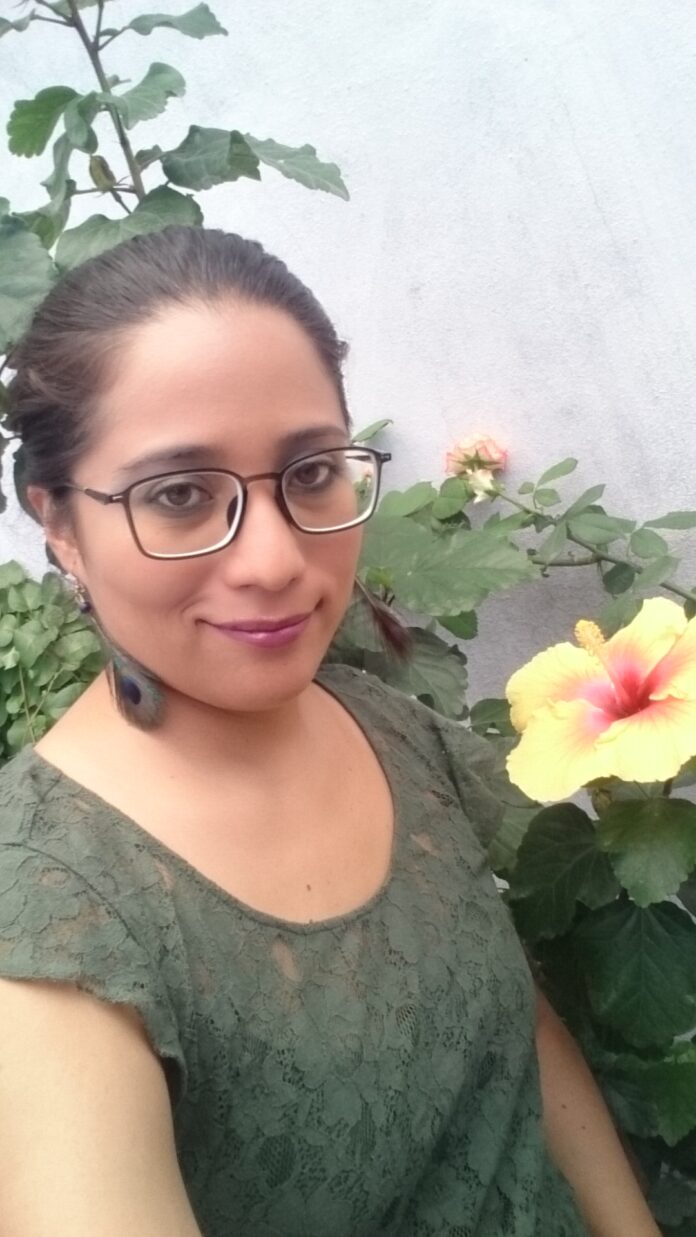
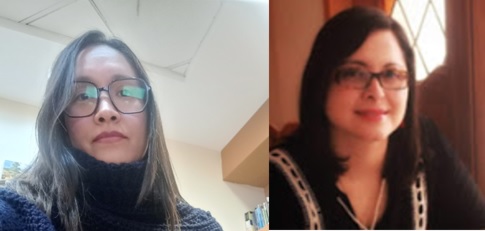


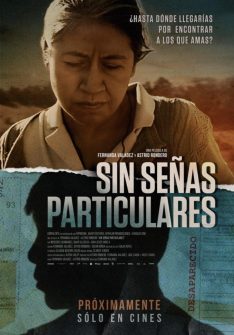
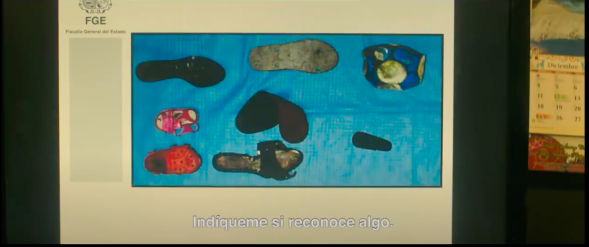
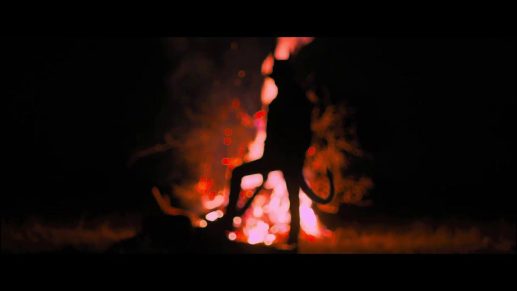
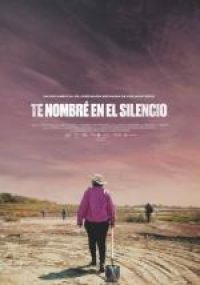

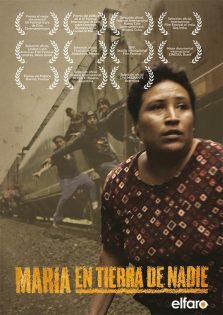

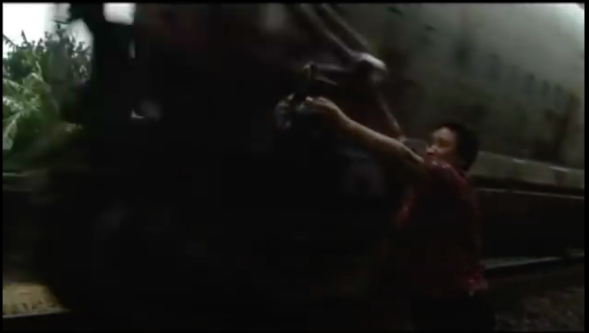
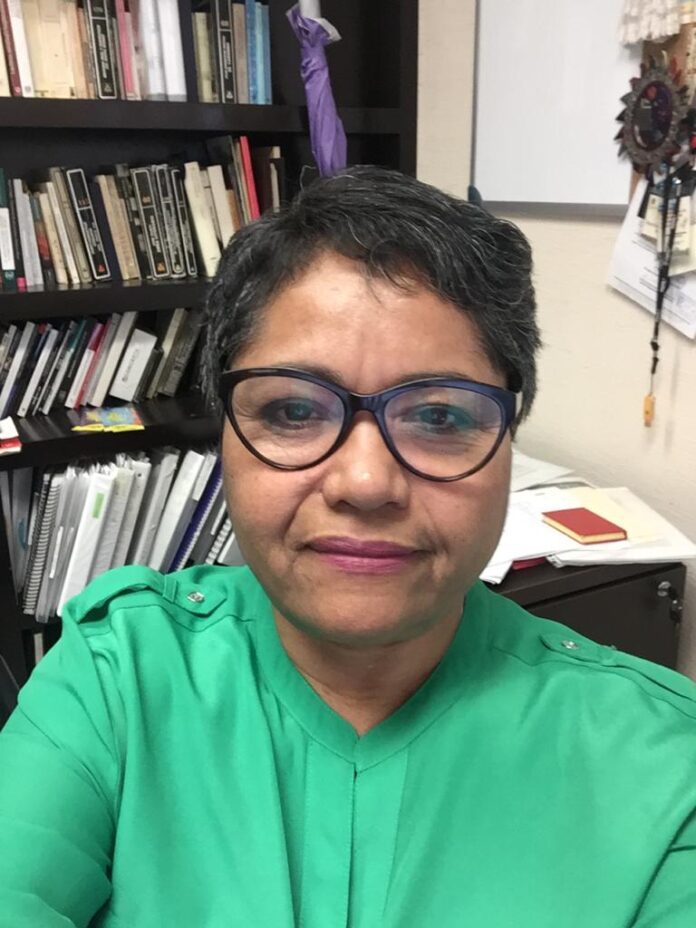

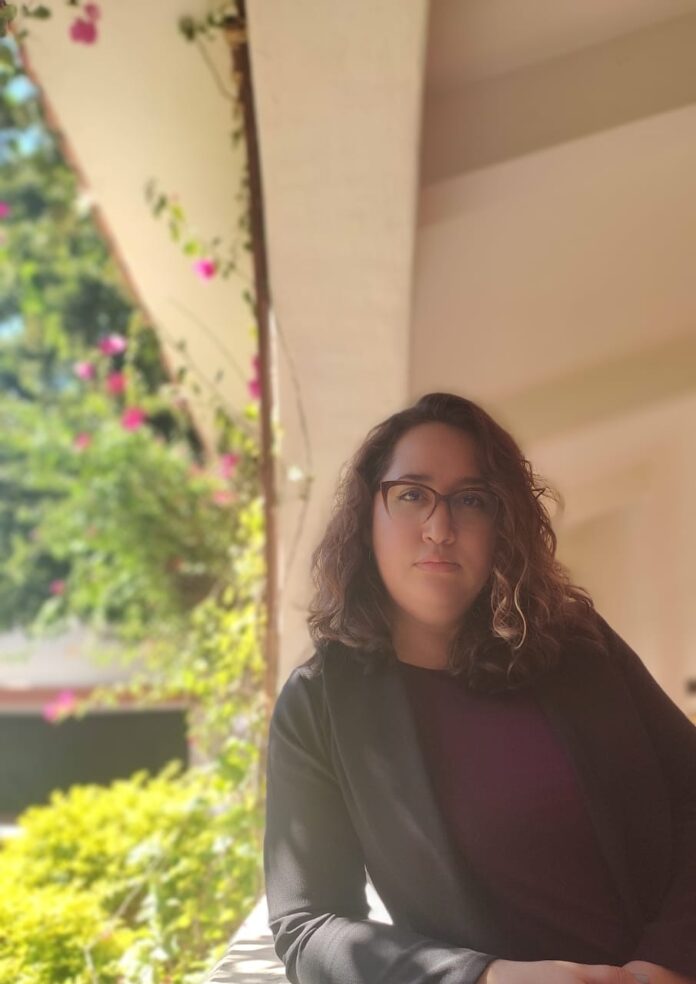
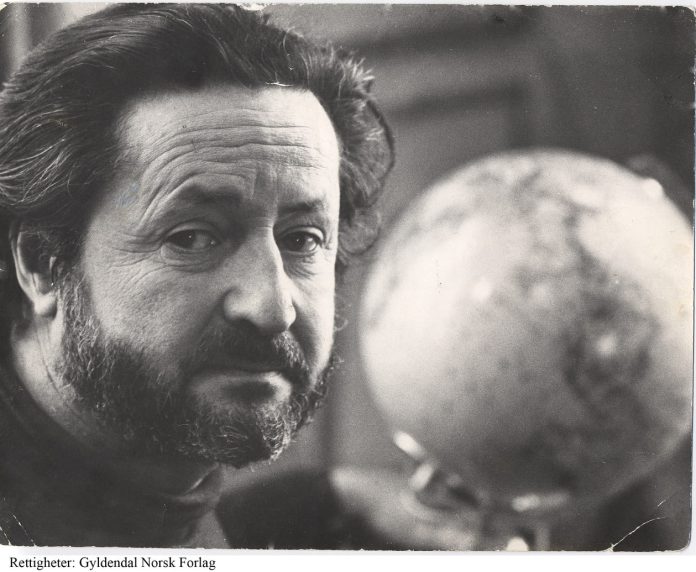


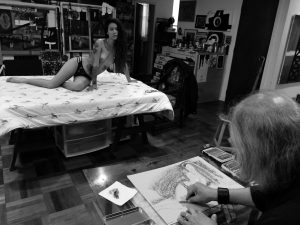

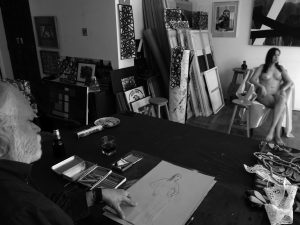
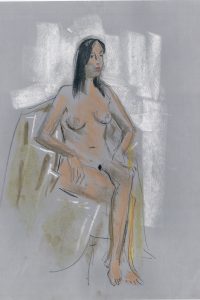
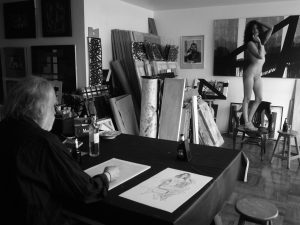
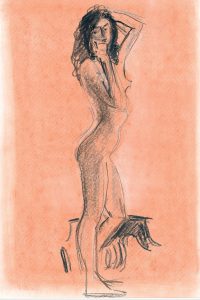
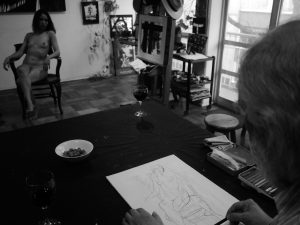
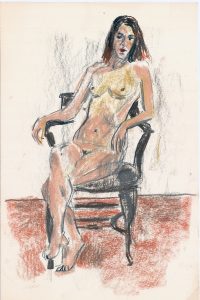
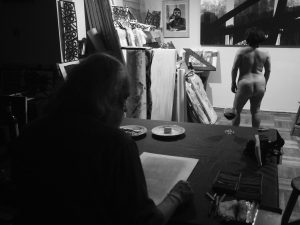
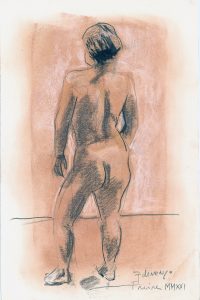
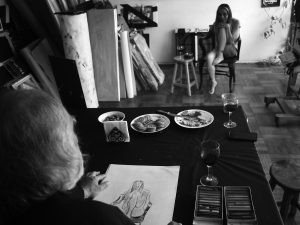
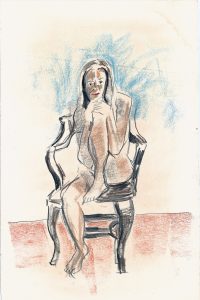
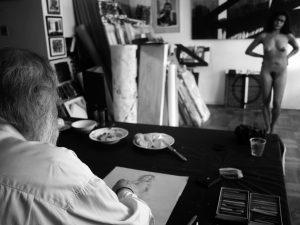
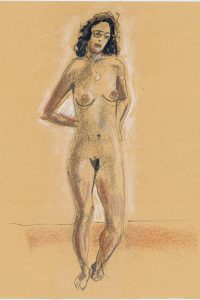

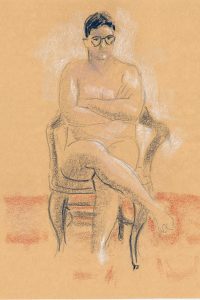
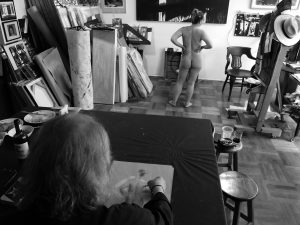

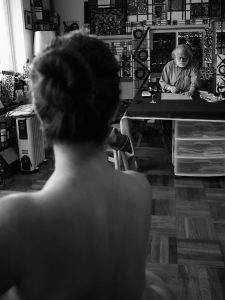
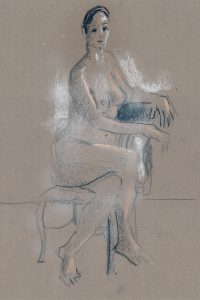
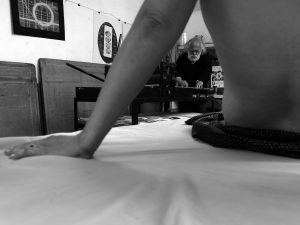
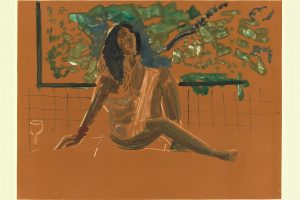
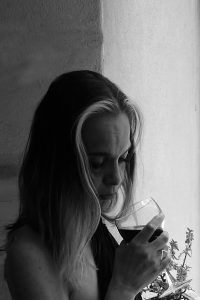 Entre los lienzos de René Freire
Entre los lienzos de René Freire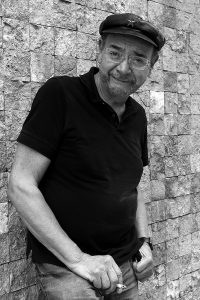 La desnudez de lo real
La desnudez de lo real